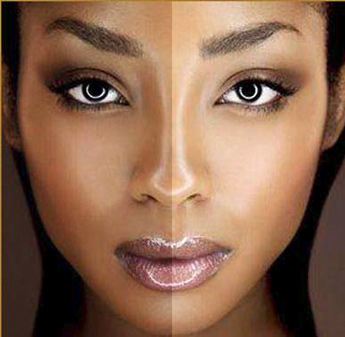“She’s pretty for a dark skin girl!”
“Light-skin has always been better than dark”
“In my opinion, dark skin people just aren’t attractive.”
“I wish I had light skin, pretty eyes and pretty hair like Beyoncé.”
For decades, there has been a competition between people with different skin tones in the black community. Often, favoring those with fair skin. Even in the youngest of the race, this competition presents itself as an issue.
The Clark Doll Experiment, administered by Kenneth and Mamie Clark, was an experiment that dealt with race and how children perceive it at a young age. The results produced by it were astonishing.
In the experiment, Clark showed black children aged 6-9 two dolls, one white and one black, and then asked these questions in this order:
“Show me the doll that you like best or that you’d like to play with,”
“Show me the doll that is the ‘nice’ doll,”
“Show me the doll that looks ‘bad’,”
“Give me the doll that looks like a white child,”
“Give me the doll that looks like a coloured child,”
“Give me the doll that looks like a Negro child,”
“Give me the doll that looks like you.”
The questionnaire concluded with 44 percent of the black children choosing the white doll as being the doll that looked like them. This study gained a lot of attention based on the fact that young black children were disassociating themselves with their true race. A question that the case leaves lingering in the air is “why did the children choose the white doll rather than the one that resembled themselves?”
Many people of color have been trained to favor fair or lighter colored skin. They talk about how they don’t want to get too dark when summer time comes around and how their tan is finally fading when fall turns to winter. But why? The answer begins with slavery.
During the beginning of the slave era, black people were often forced apart by their enslavers in an effort to better control them. Tribes were turned against each other. Families were ripped apart and many leaders were forced to give their own people up. Fast forward to life as a slave in the USA and the division between the stolen was even deeper. Those slaves with light skin were given less arduous task than those with dark skin because they were usually the result of a slave owner raping a slave. Going further down the timeline after being freed and 1865 many former slaves assimilated to white culture to appear less threatening. They conceal their curly hair, unique physique and try their best to talk and act like their European descendant counterparts to fit in, get a decent paying job and provide for their families. Though they took all of these precautions, blacks were still heavily discriminated against and led to believe that their natural skin tones were not beautiful.
Even in the early 2000s many black people still struggle with embracing their natural skin tone because of this. Many have had insults hurled at them for being too dark or too light. Colorism has, in a way, led many of us to feel unsure about our place in the black communities. Where do we fit in? Should we stand out? Thankfully, the black community has become more sensitive and inclusive when it comes to skin tones, hair textures and other natural traits.
Though colorism is becoming less prevalent, it is still imperative that we continue to progress by not only embracing others for being different shades but loving ourselves for who we are. By doing this it is not for certain that colorism will be completely eliminated, but the world will be a better place for all of us.
-Sojourner Chief
